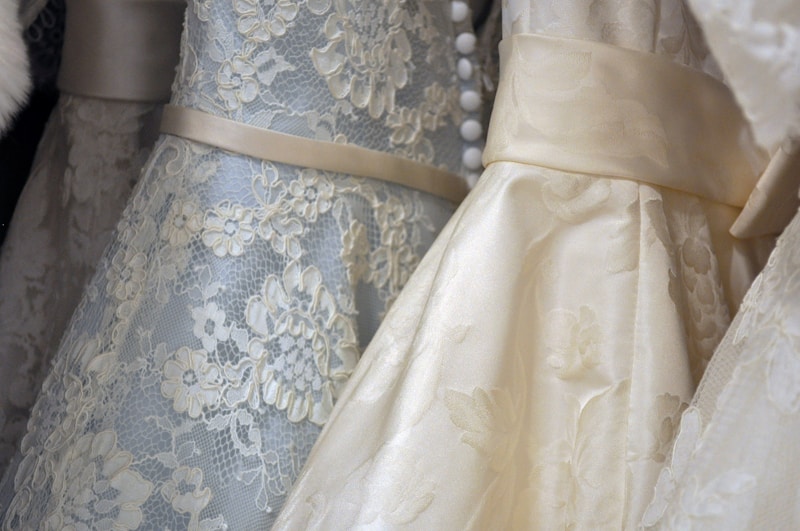Transforming Ideas into Reality in Wedding Dress Design
Transforming Ideas into Reality in Wedding Dress Design
The Art of Wedding Dress Design: Turning Dreams into Stunning Creations
Wedding dress design is a multifaceted art that combines creativity, elegance, and technical skill. It is a journey where designers turn simple ideas into breathtaking gowns that embody the dreams of brides. This article delves into the process of transforming ideas into reality in wedding dress design, exploring key elements, techniques, and considerations that every designer should keep in mind.
Understanding the Concept: From Inspiration to Creation
Every wedding dress begins with a spark of inspiration. It could be a fabric's texture, a color palette, or even a historical fashion trend. The key is to harness these ideas and cultivate them into a cohesive design vision. Designers often draw inspiration from various sources—nature, art, pop culture, and even personal experiences. By blending these influences, they can create something truly unique.
Research and Ideation
The first step in transforming ideas into a wedding dress design is thorough research. Understanding current trends, bridal preferences, and the history of wedding dresses is crucial. This research phase allows designers to build a solid foundation for their ideas. They often compile mood boards, gather swatches, and sketch initial designs to visualize the potential of their concepts. This process not only helps in refining ideas but also guides designers in making crucial decisions about materials and techniques.
Critical Elements of Wedding Dress Design
Several elements are essential in transforming ideas into actual dresses. These include:
| Elements | Description |
| Silhouette | The overall shape of the gown, which influences how it looks and how comfortable it is to wear. |
| Fabric | The choice of fabric affects the flow, texture, and drape of the dress. |
| Color | The color can evoke emotions and set the tone for the wedding. |
| Embellishments | Details such as beads, lace, and embroidery that add character and charm to the dress. |
| Fit | A well-fitted dress enhances the bride's figure and ensures comfort throughout the day. |
Choosing the Right Silhouette
The silhouette is one of the most critical aspects of wedding dress design. Popular silhouettes include A-line, ball gown, mermaid, and sheath. Each style flatters different body types, allowing brides to express their individuality. For example, an A-line dress is versatile and suits various body shapes, while a mermaid cut emphasizes curves beautifully. Designers must understand their clients' preferences and body types to suggest the most flattering options.
Fabric Selection: The Backbone of Each Design
Fabric selection plays a pivotal role in the overall look and feel of a wedding dress. Popular choices include satin, chiffon, tulle, and lace. Each fabric has unique characteristics that affect the dress's drape and sturdiness. For instance, lace can add a romantic touch, while satin contributes elegance with its smooth surface. Designers often consider the season and venue when selecting fabrics—for example, lightweight materials are ideal for summer weddings, while heavier fabrics might be better for winter.
Color Trends in Wedding Dress Design
While traditional white and ivory remain timeless choices, many modern brides are opting for alternative colors, such as blush, champagne, and even bold hues like deep red or navy. The color of a wedding dress can significantly impact its overall aesthetic, allowing brides to showcase their personalities. Designers must stay updated on color trends and understand how different shades can complement their fabric choices and design concepts.
Adding Unique Touches: Embellishments and Details
Embellishments are the icing on the cake in wedding dress design. They add depth and texture to the gown, making it a true work of art. Designers can choose from a wide range of embellishments, including sequins, beads, embroidery, and appliqués. The key is to strike a balance—too many embellishments can overwhelm the design, while too few may make it appear plain. A well-placed embellishment can draw attention to specific areas, enhancing the bride's figure while adding a touch of elegance.
Perfect Fit: The Tailoring Process
The journey from idea to reality isn't complete without the element of fit. A wedding dress must be tailored to perfection to ensure comfort and confidence on the big day. The fitting process involves multiple adjustments and fittings, allowing brides to express their preferences and make necessary changes. Designers must be patient and attentive during this stage, ensuring the dress fits flawlessly and makes the bride feel her best.
Technology in Wedding Dress Design
In today's digital age, technology plays a significant role in the design process. Many designers use software to create digital sketches, allowing for quick adjustments and a clearer visualization of the final product. 3D modeling and fabric simulation also help in understanding how a dress will look and move, ultimately aiding in the decision-making process. Moreover, augmented reality (AR) can enable brides to 'try on' designs virtually, enhancing their shopping experience.

Conclusion: Transforming Dreams into Reality
Transforming ideas into reality in wedding dress design is a complex yet fulfilling process. It combines creativity, technical skill, and an understanding of individual preferences. By exploring elements such as silhouette, fabric, color, embellishments, and fit, designers can create stunning gowns that resonate with brides' dreams.
As the wedding industry continues to evolve, so will the approaches to design. Staying updated with trends and being open to innovation ensures that designers remain relevant and able to cater to diverse preferences. Ultimately, the goal is to make every bride feel extraordinary on her special day, encapsulating her unique love story through a beautifully crafted wedding dress.
In summary, aspiring wedding dress designers should focus on research, attention to detail, and adaptability. Explore different techniques and continually learn and grow in the field. With passion and dedication, anyone can bring their ideas to life and create unforgettable wedding dresses that celebrate love and beauty.
